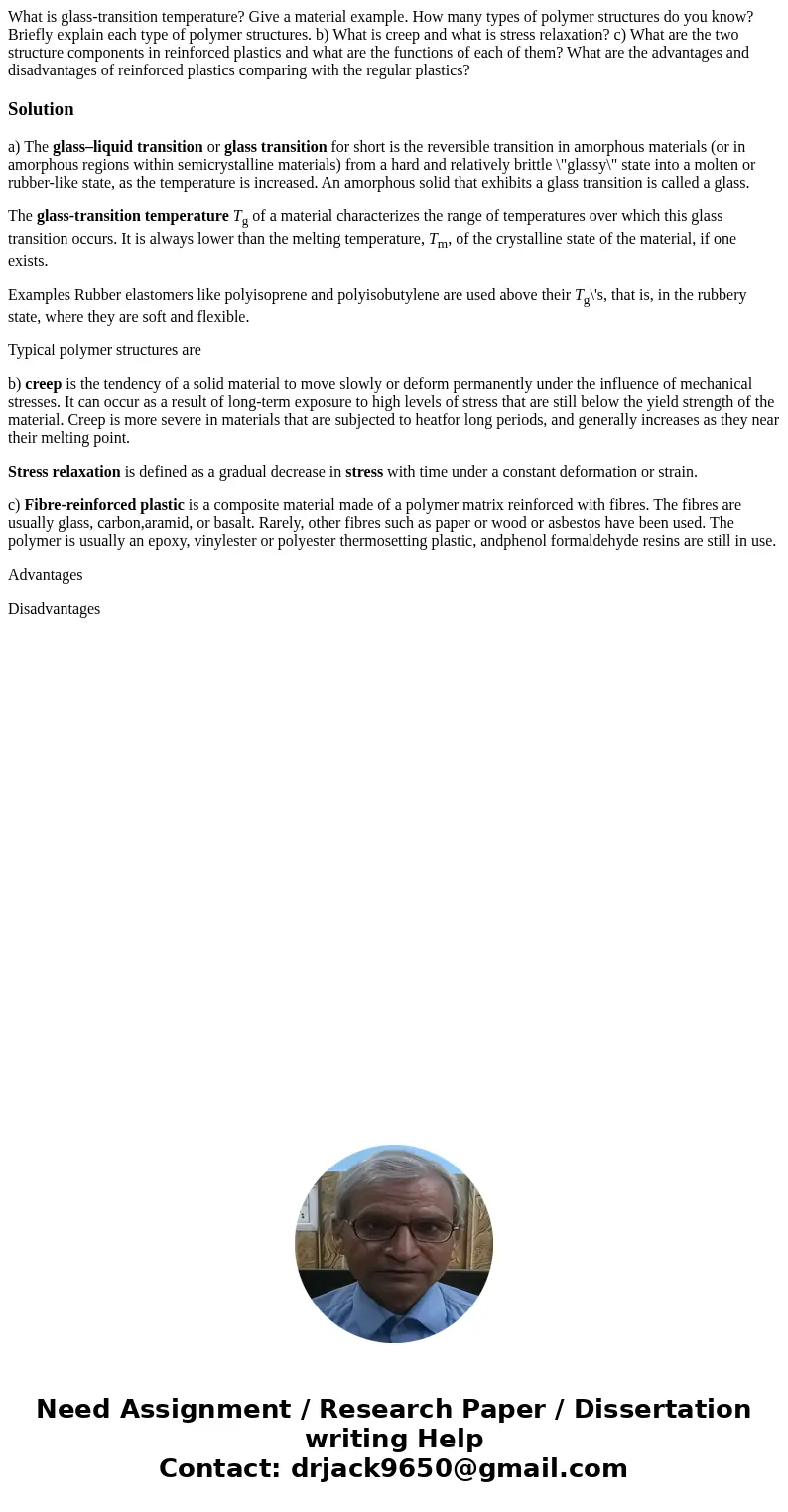What is glasstransition temperature Give a material example
Solution
a) The glass–liquid transition or glass transition for short is the reversible transition in amorphous materials (or in amorphous regions within semicrystalline materials) from a hard and relatively brittle \"glassy\" state into a molten or rubber-like state, as the temperature is increased. An amorphous solid that exhibits a glass transition is called a glass.
The glass-transition temperature Tg of a material characterizes the range of temperatures over which this glass transition occurs. It is always lower than the melting temperature, Tm, of the crystalline state of the material, if one exists.
Examples Rubber elastomers like polyisoprene and polyisobutylene are used above their Tg\'s, that is, in the rubbery state, where they are soft and flexible.
Typical polymer structures are
b) creep is the tendency of a solid material to move slowly or deform permanently under the influence of mechanical stresses. It can occur as a result of long-term exposure to high levels of stress that are still below the yield strength of the material. Creep is more severe in materials that are subjected to heatfor long periods, and generally increases as they near their melting point.
Stress relaxation is defined as a gradual decrease in stress with time under a constant deformation or strain.
c) Fibre-reinforced plastic is a composite material made of a polymer matrix reinforced with fibres. The fibres are usually glass, carbon,aramid, or basalt. Rarely, other fibres such as paper or wood or asbestos have been used. The polymer is usually an epoxy, vinylester or polyester thermosetting plastic, andphenol formaldehyde resins are still in use.
Advantages
Disadvantages

 Homework Sourse
Homework Sourse